by Esther Miriam (speech said at her Bas-Mitzvah celebration, Sukkot 5784/2023 explaining her Bas-Mitzvah “Bucket-List” project):
Since I was young I had all these ideas of things I wanted to do. I like fun and adventure and trying new things. I’m curious and eager, always up for a challenge or opportunity, usually saying “sure!” before finding out the details. I get easily excited and enthusiastic and enjoy wow moments and experiences.
What types of things are on my bucket lists? All types of things, and I keep adding new ones all the time! For example, I always wanted to go fishing (my first time trying, I caught a snapping turtle!), I couldn’t wait to try a zip-line, visit a gym, learn to play a musical instrument and I can’t wait to fly on an airplane.
I was born on Sukkos, during in-between Chol HaMoed days when my family usually goes on trips and outings. Maybe that’s where I caught the bug for adventure and trying new things? But it’s more than that. A Sukkah is open and exposed and vulnerable to the elements. Sukkos we go out of our comfort zone.
A Sukkah is designed to draw our eyes upward and heavenward. Bucket-lists can also uplift us in that way. They keep us striving, moving the goal-posts higher and higher as we check things off the list, adding new goals and keep stretching our limits further.
So I thought of doing my Bas-Mitzvah project on Bucket-Lists. That’s when I realized that bucket-lists are not just ideas of fun or travel or new things to try. Bucket-lists can be meaningful, too.
We should also have bucket-lists for Torah and Mitzvos and our spiritual and personal growth. As these sayings teach us, it’s not enough to only do the obligated and required but we are encouraged to push our limits, go deeper and beyond and take it to a whole new level!
Together with my parents and siblings, we learned 12 Torah teachings that have Bucket-List messages. I depicted them artistically with different lettering fonts and illustrations to express their meaning.
I’m going to explain the 12 sayings. They are on display here in full watercolor at the Bas-Mitzvah – & printed uncolored inside the booklet. (They are in a different order in the booklet).
People tell me that my wishes are like a bucket-list. A few of the sayings are connected to buckets and the rest are to bucket-lists and expanding our horizons with goals and aspirations beyond the required and obligated:
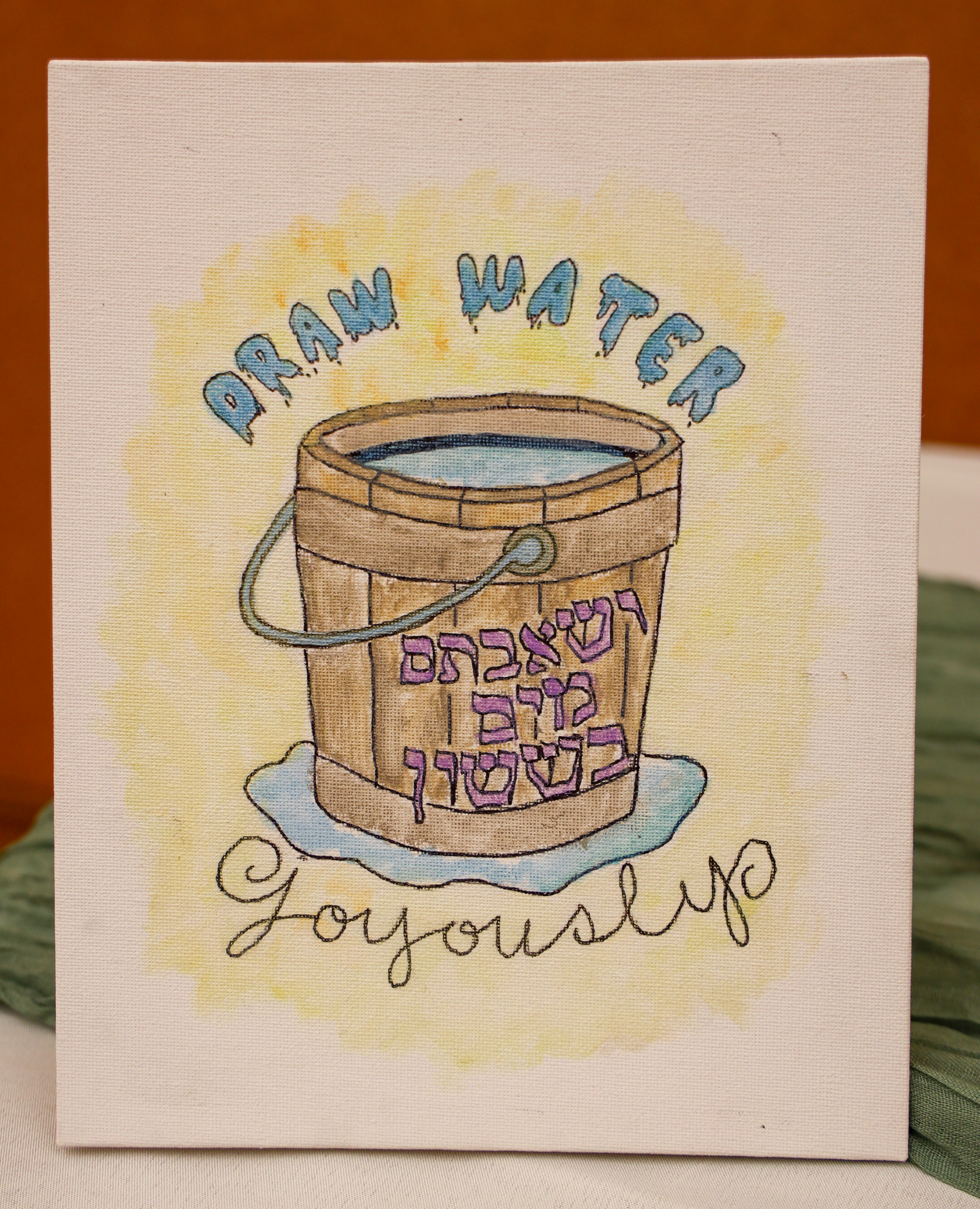 1) Since it is Sukkos, let’s start with the one that has a drawing of a bucket on it. “Draw Water Joyously” matches the bucket theme. And it fits the holiday of Sukkos very nicely because it is a holiday that celebrated the drawing of water in the Jerusalem Temple. That’s why it is called Simchas Beis HaShoeva. I’m lucky Baruch Hashem to have all my grandparents, my Bubbes and Zeides from both Brooklyn and Albany, here at my Bas-Mitzvah to celebrate joyously with me today. Like a bucket in a well, we draw deep on their wisdom and life experiences to drink from and refresh us.
1) Since it is Sukkos, let’s start with the one that has a drawing of a bucket on it. “Draw Water Joyously” matches the bucket theme. And it fits the holiday of Sukkos very nicely because it is a holiday that celebrated the drawing of water in the Jerusalem Temple. That’s why it is called Simchas Beis HaShoeva. I’m lucky Baruch Hashem to have all my grandparents, my Bubbes and Zeides from both Brooklyn and Albany, here at my Bas-Mitzvah to celebrate joyously with me today. Like a bucket in a well, we draw deep on their wisdom and life experiences to drink from and refresh us.
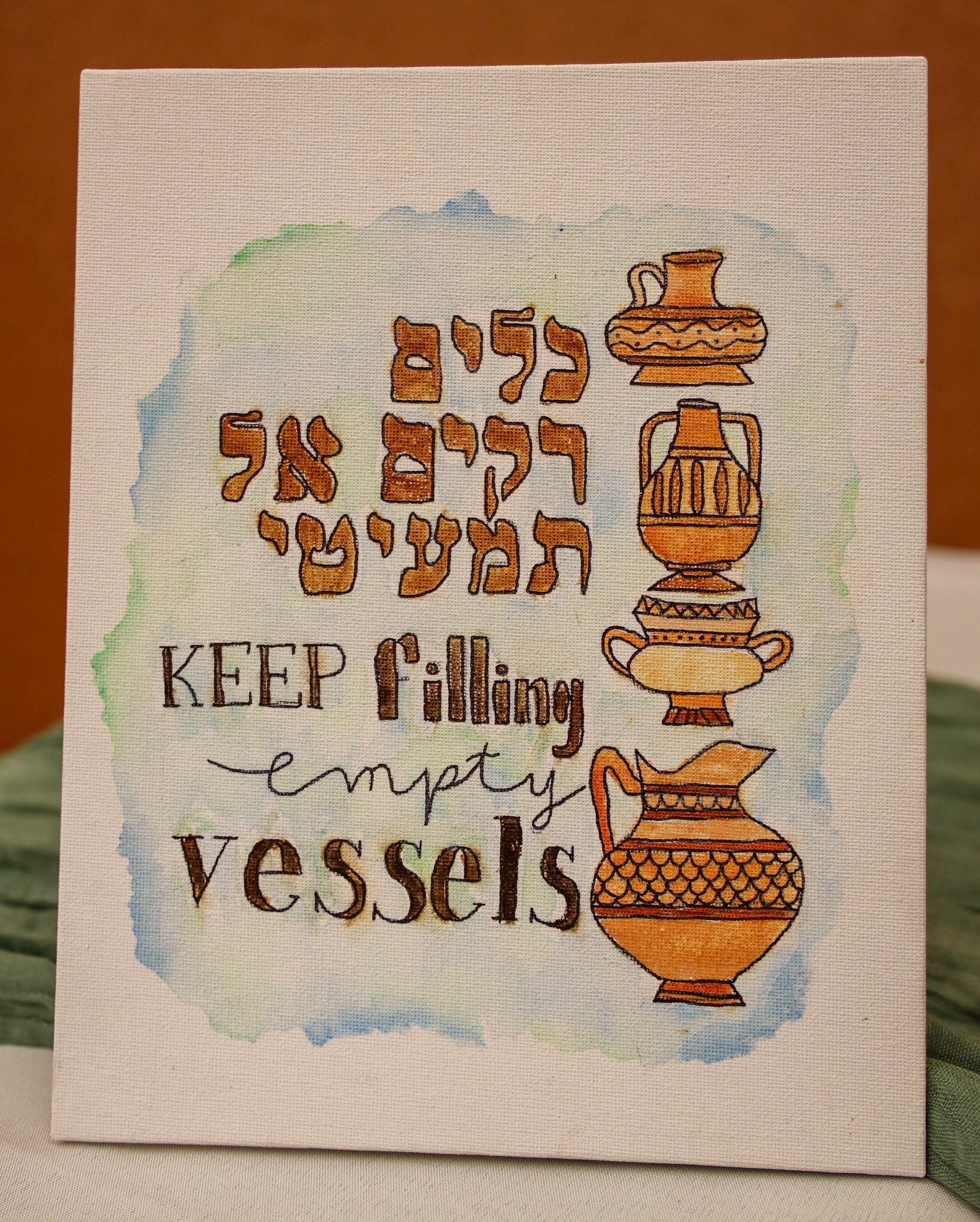 2) The next one, has drawings of pottery vessels. I liked drawing the details on them. The idea of filling a bucket is like the story of Elisha and the never-ending oil. Elisha the Prophet told the impoverished widow, “Get as many empty vessels as possible” – and Elisha miraculously kept filling and filling all those empty vessels for this woman and her family with an endless supply of oil – until all of the available empty vessels ran out. Chassidus also sees this story as a lesson for us to be an open, ready, and empty vessel – to have “Bittul”. Not to feel too full and smug and complete so there’s no room for more ideas/blessings etc.
2) The next one, has drawings of pottery vessels. I liked drawing the details on them. The idea of filling a bucket is like the story of Elisha and the never-ending oil. Elisha the Prophet told the impoverished widow, “Get as many empty vessels as possible” – and Elisha miraculously kept filling and filling all those empty vessels for this woman and her family with an endless supply of oil – until all of the available empty vessels ran out. Chassidus also sees this story as a lesson for us to be an open, ready, and empty vessel – to have “Bittul”. Not to feel too full and smug and complete so there’s no room for more ideas/blessings etc.
 3) There’s a beautiful expression and prayerful wish, “May Hashem fill our hearts desires for the good.” Amen! (we say when taking out the Torah). Fill – is like filling a bucket. I didn’t draw the heart here the way people usually draw hearts. I made it like a real heart (the way you learn about it in science) because a real heart is like an active non-stop hard-working pump. It doesn’t only fill up itself, it works constantly to pump outward and reach all around the body. It brings life to all parts of the body. Thank you to my parents who not only fill all of my own desires but they also energetically pump outwards non-stop to help fill others, too.
3) There’s a beautiful expression and prayerful wish, “May Hashem fill our hearts desires for the good.” Amen! (we say when taking out the Torah). Fill – is like filling a bucket. I didn’t draw the heart here the way people usually draw hearts. I made it like a real heart (the way you learn about it in science) because a real heart is like an active non-stop hard-working pump. It doesn’t only fill up itself, it works constantly to pump outward and reach all around the body. It brings life to all parts of the body. Thank you to my parents who not only fill all of my own desires but they also energetically pump outwards non-stop to help fill others, too.
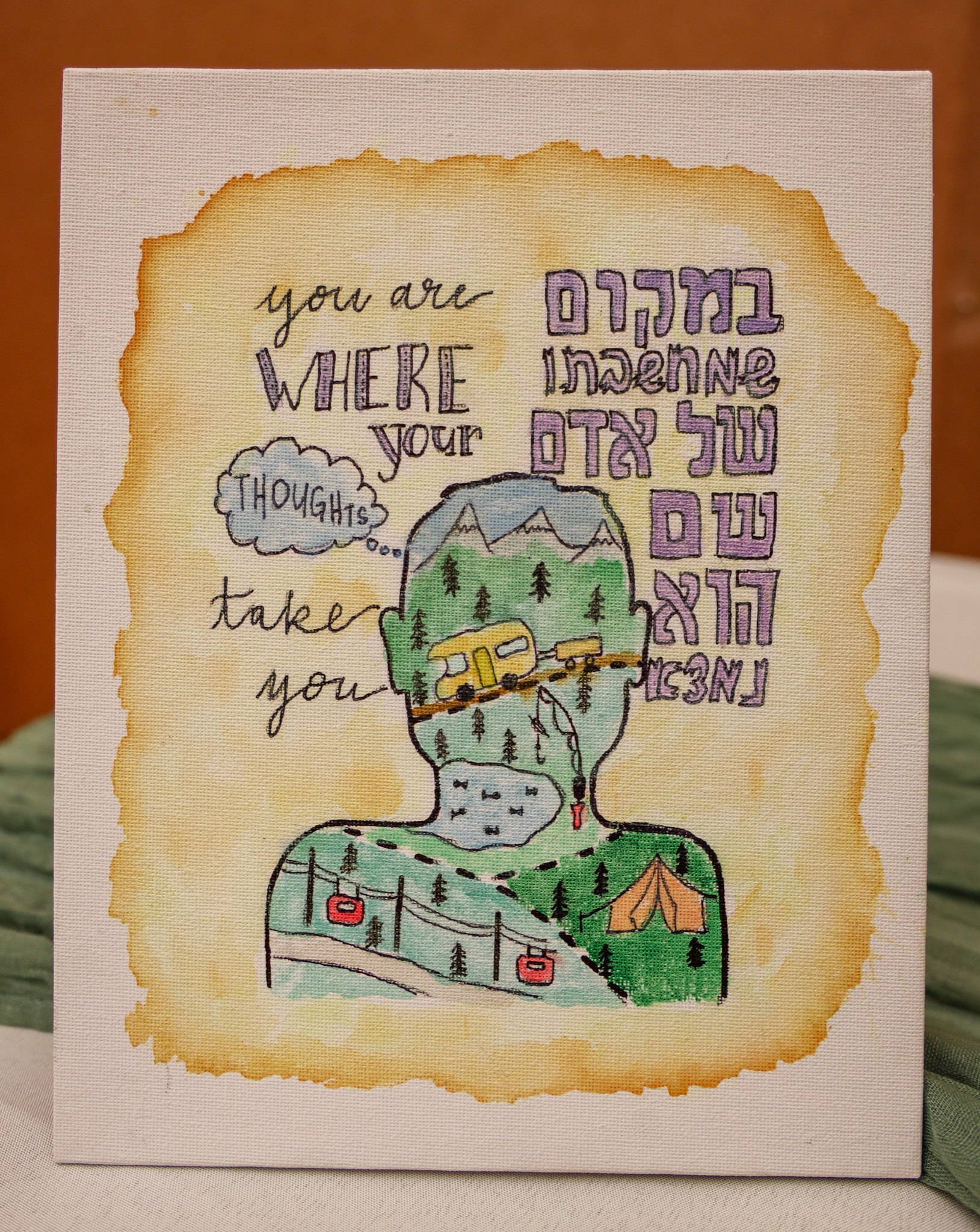 4) This drawing has a person filled with many thoughts. The Baal Shem Tov (the founder of the Chassidic movement) said, “You are – where your thoughts take you.” Having a good bucket list allows us “to be” where our thoughts and dreams are – even before we actually get there. We can be there in our mind and heart! So let’s make sure to think good thoughts and have good healthy and positive things on our bucket lists! Speaking of getting there – many thanks to my cousins near and far for giving me places to travel to, explore and visit! Road-trips to see them for holidays or happy occasions are some of my favorite adventures and memories. Surely on my bucket-list!
4) This drawing has a person filled with many thoughts. The Baal Shem Tov (the founder of the Chassidic movement) said, “You are – where your thoughts take you.” Having a good bucket list allows us “to be” where our thoughts and dreams are – even before we actually get there. We can be there in our mind and heart! So let’s make sure to think good thoughts and have good healthy and positive things on our bucket lists! Speaking of getting there – many thanks to my cousins near and far for giving me places to travel to, explore and visit! Road-trips to see them for holidays or happy occasions are some of my favorite adventures and memories. Surely on my bucket-list!
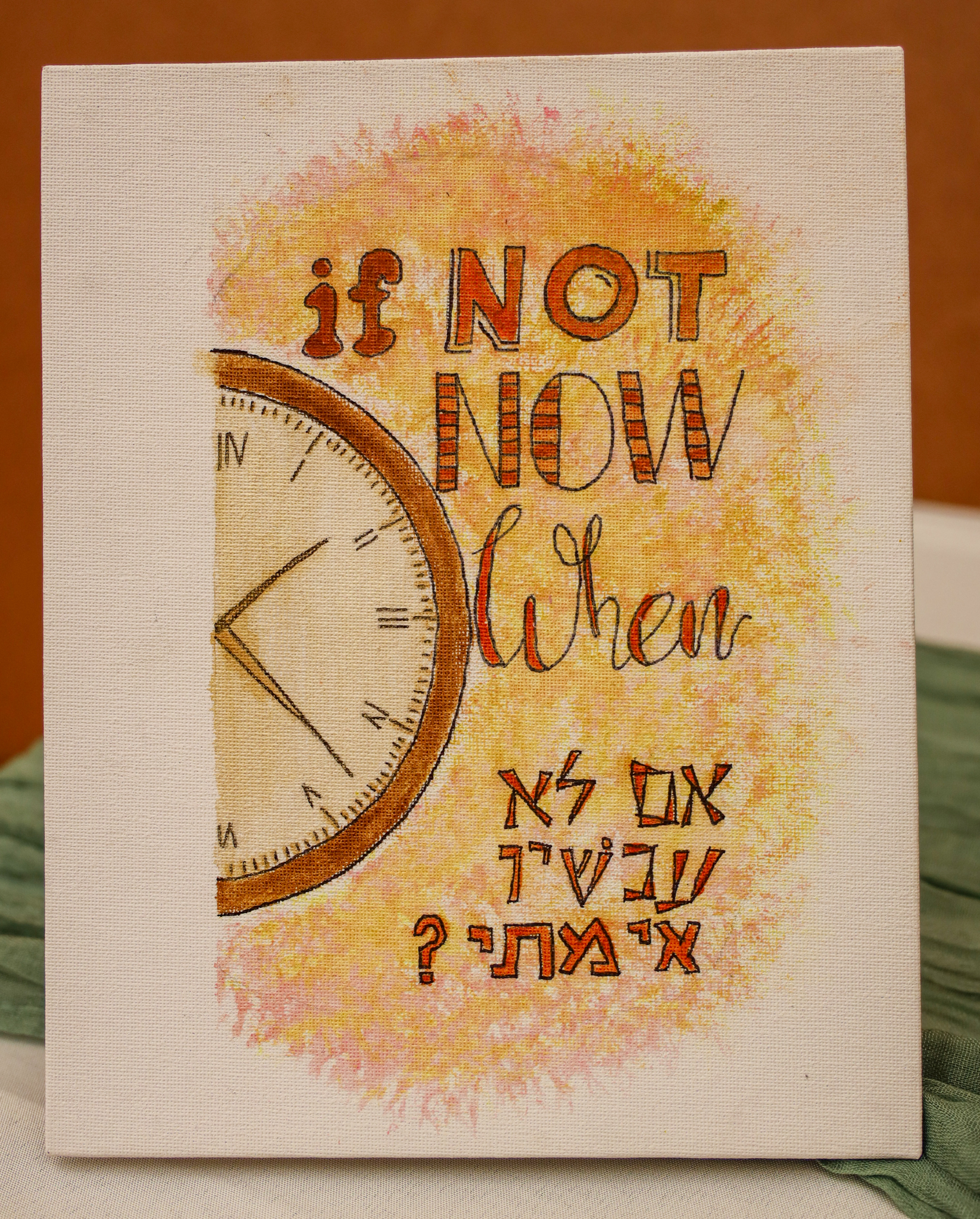 5) But please don’t wait too long, don’t procrastinate… I know patience is good and considered a great virtue, but I’m (a little impatient and) pretty eager. I don’t want to push things off. I don’t like sitting around. Pirkei Avos says, “If not now, when!?” Like the song about Moshiach says: “We don’t want to wait!” And my father likes that word “alacrity!” which in Hebrew is “Zerizut” – not exactly a pressuring rush or hasty hurry, but a lively cheerful hopeful eagerness, a swifty able. prompt and timely readiness, and a thirsty sense of urgency – let’s get to it, let’s do it!
5) But please don’t wait too long, don’t procrastinate… I know patience is good and considered a great virtue, but I’m (a little impatient and) pretty eager. I don’t want to push things off. I don’t like sitting around. Pirkei Avos says, “If not now, when!?” Like the song about Moshiach says: “We don’t want to wait!” And my father likes that word “alacrity!” which in Hebrew is “Zerizut” – not exactly a pressuring rush or hasty hurry, but a lively cheerful hopeful eagerness, a swifty able. prompt and timely readiness, and a thirsty sense of urgency – let’s get to it, let’s do it!
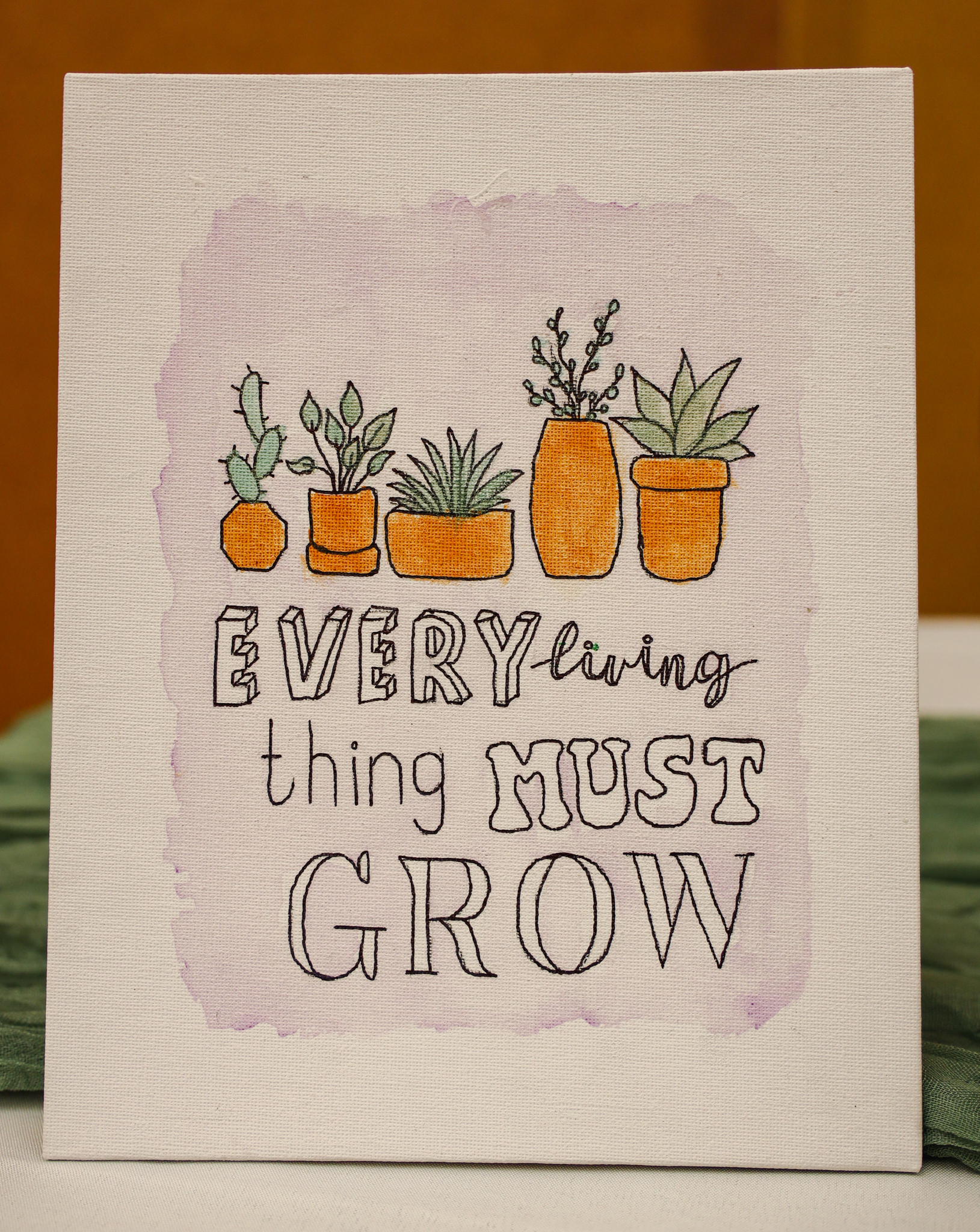 6) In JEM’s “Challenge” video, the Rebbe says: “Every living thing must grow!” If it is alive, it is or should be growing in some way. Standing still and not changing isn’t a good healthy sign of life. People need to aspire higher, to push themselves to do more, to rise to the challenge and beat their own expectations. You can hear the Rebbe say it to someone in English, just like that: “Every Living Thing Must Grow!” A few of these 12 teachings I learned from the Challenge video. You can see “Challenge” here on Chabad.org. It’s a short, really nice video with lots of short clips of Rebbe talks and meaningful people interactions, all on this theme. And there’s some humor in it, too!
6) In JEM’s “Challenge” video, the Rebbe says: “Every living thing must grow!” If it is alive, it is or should be growing in some way. Standing still and not changing isn’t a good healthy sign of life. People need to aspire higher, to push themselves to do more, to rise to the challenge and beat their own expectations. You can hear the Rebbe say it to someone in English, just like that: “Every Living Thing Must Grow!” A few of these 12 teachings I learned from the Challenge video. You can see “Challenge” here on Chabad.org. It’s a short, really nice video with lots of short clips of Rebbe talks and meaningful people interactions, all on this theme. And there’s some humor in it, too!
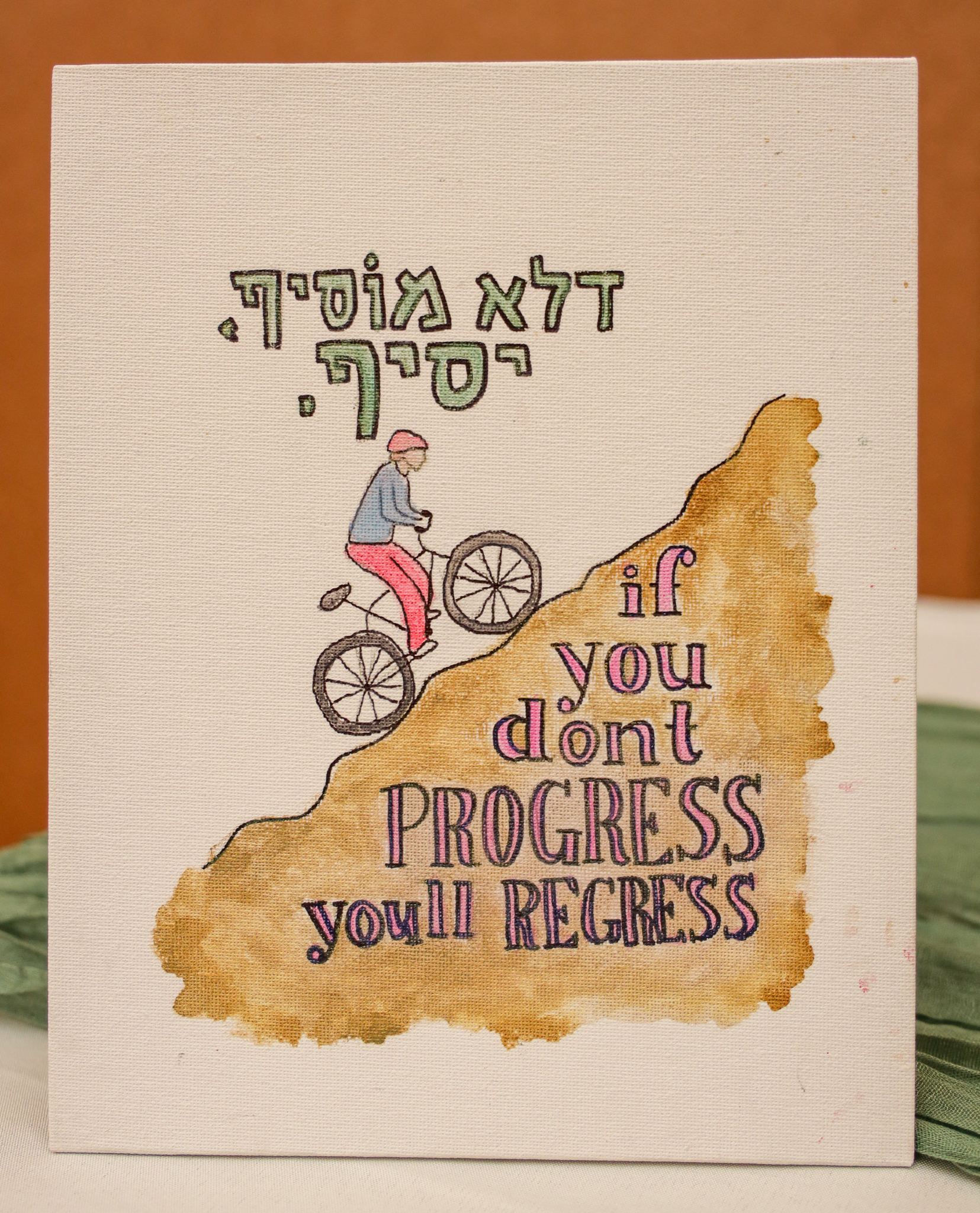 7) The saying “D’lo Mosif, Yosif” that I illustrated with the bicycle climbing upwards on a hill illustrates a teaching in Pirkei Avos (Ethics of Our Fathers) which says, “If you don’t progress, you’ll regress.” I know my father often tells this idea to new prospective students who come to campus. We’re on a hill in life (especially Jewishly at college or in other challenging situations). You can’t be in neutral and rely on status quo and expect to even stay in the same place, never mind to progress up the hill. If you’re in neutral you’ll slide downwards. Momentum is key! We always need to put effort into it, otherwise we’ll go backwards.
7) The saying “D’lo Mosif, Yosif” that I illustrated with the bicycle climbing upwards on a hill illustrates a teaching in Pirkei Avos (Ethics of Our Fathers) which says, “If you don’t progress, you’ll regress.” I know my father often tells this idea to new prospective students who come to campus. We’re on a hill in life (especially Jewishly at college or in other challenging situations). You can’t be in neutral and rely on status quo and expect to even stay in the same place, never mind to progress up the hill. If you’re in neutral you’ll slide downwards. Momentum is key! We always need to put effort into it, otherwise we’ll go backwards.
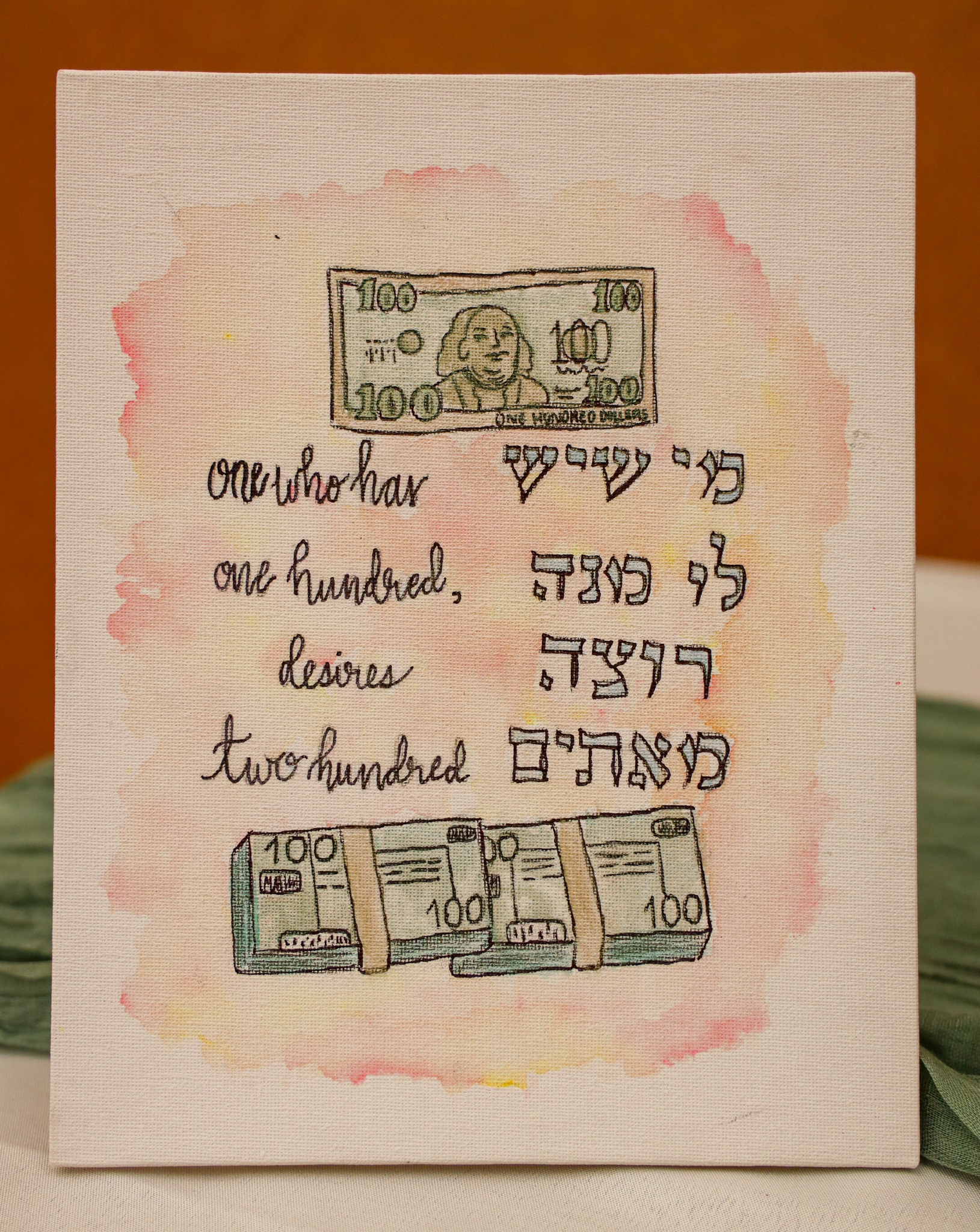 8) This one has 100 dollar bills on it. (I drew them, they are not actual). There’s a one-hundred dollar bill on top, and two hundred dollar bills on bottom. Can you tell the person on the bill is Ben Franklin? The Rebbe often quotes a Midrash that says, “One who has one hundred will want 200 hundred, and the person who has 200 hundred will want 400 hundred.” People always want more. It sounds like a selfish thing, but this character trait can and should also be used in a good way. The Rebbe often used this expression to say we shouldn’t be satisfied with our accomplishments, and always try to do even more.
8) This one has 100 dollar bills on it. (I drew them, they are not actual). There’s a one-hundred dollar bill on top, and two hundred dollar bills on bottom. Can you tell the person on the bill is Ben Franklin? The Rebbe often quotes a Midrash that says, “One who has one hundred will want 200 hundred, and the person who has 200 hundred will want 400 hundred.” People always want more. It sounds like a selfish thing, but this character trait can and should also be used in a good way. The Rebbe often used this expression to say we shouldn’t be satisfied with our accomplishments, and always try to do even more.
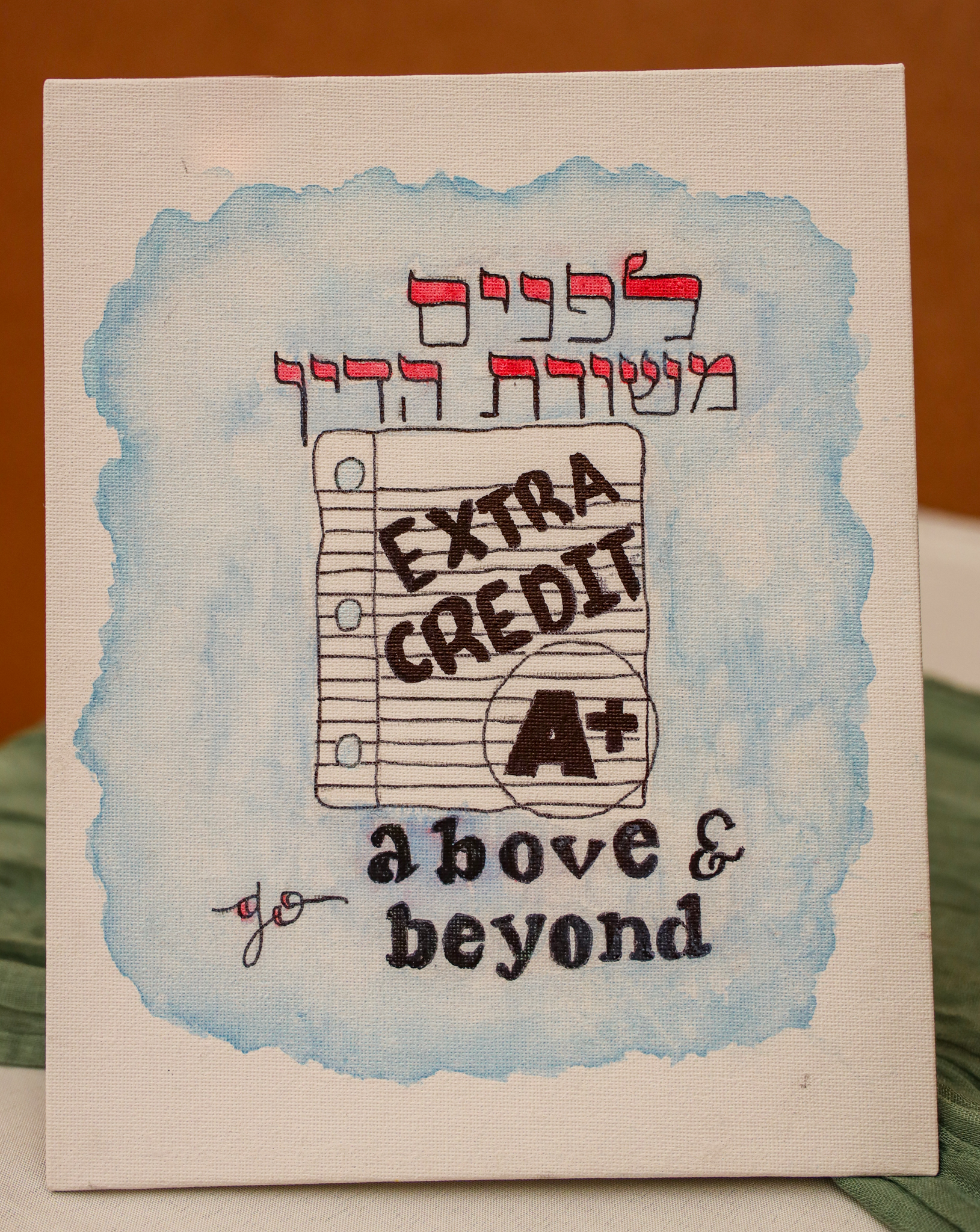 9) Did you see the one about “extra credit”? I love when teachers give extra credit. It’s disappointing when they don’t. We used the idea of extra credit to explain the saying of our Sages: “Lefnim m’Shuras HaDin” which is voluntary and optional, beyond the required or obligated. It’s encouraged that we do this with Mitzvot and good character, to do a little extra, go the extra mile. Bucket lists are not required, its something extra you have to want to do on your own. Speaking of extra-credit, I want to give credit to my teachers at Maimonides, my current Judaic and General Studies teachers and all my Maimonides teachers over the years!
9) Did you see the one about “extra credit”? I love when teachers give extra credit. It’s disappointing when they don’t. We used the idea of extra credit to explain the saying of our Sages: “Lefnim m’Shuras HaDin” which is voluntary and optional, beyond the required or obligated. It’s encouraged that we do this with Mitzvot and good character, to do a little extra, go the extra mile. Bucket lists are not required, its something extra you have to want to do on your own. Speaking of extra-credit, I want to give credit to my teachers at Maimonides, my current Judaic and General Studies teachers and all my Maimonides teachers over the years!
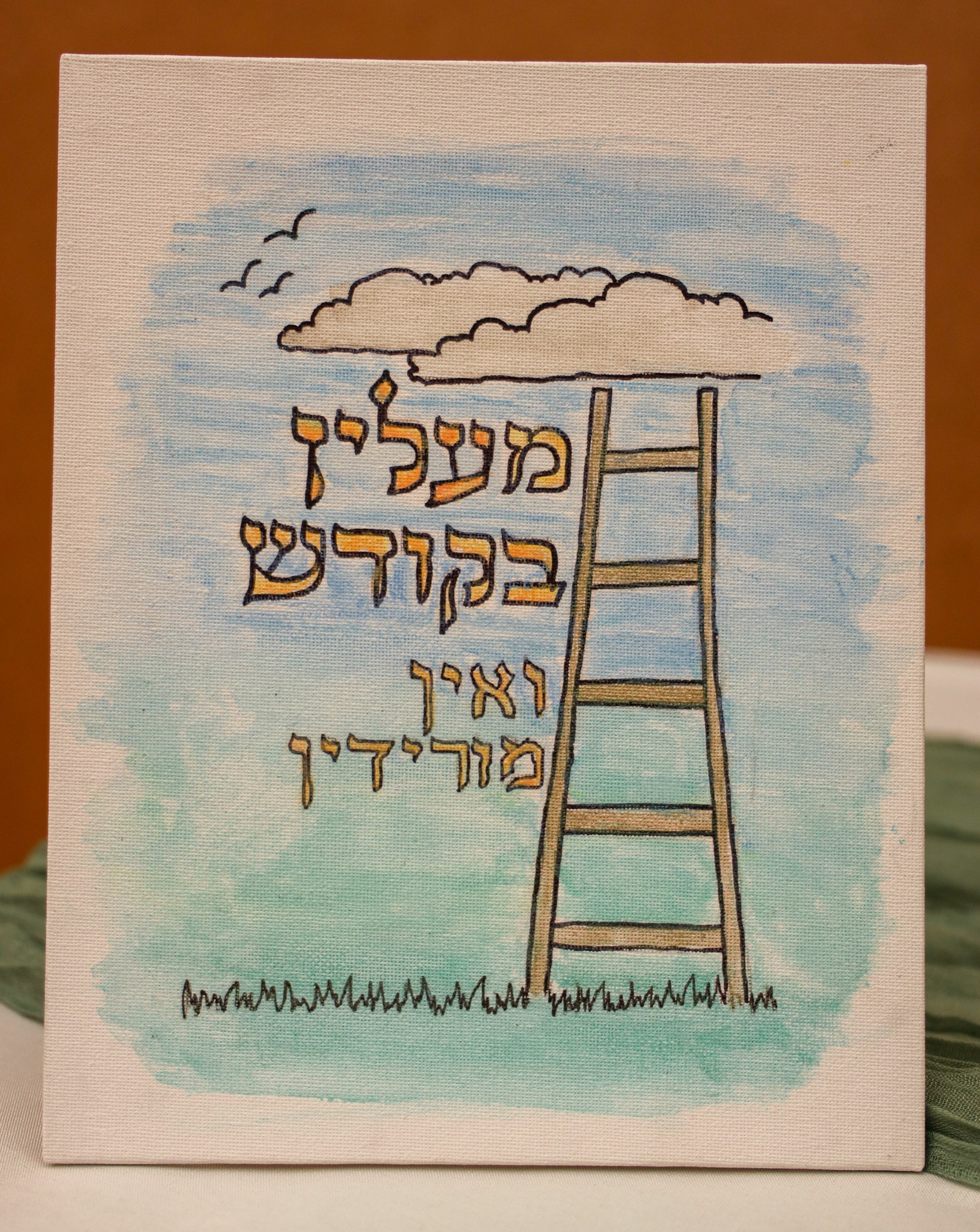 10) The ladder going up to the clouds (depicted like Jacob’s Ladder) quote says “Maalin BaKodesh, v’ayn Moridin” – which is a Talmudic statement which means: we increase in holiness, and we don’t decrease in holiness. This has halachic ramifications in the Talmud and Code of Jewish Law but is also a message for life. In terms of bucket-lists it means that we have to keep adding, not subtracting, doing more – not less. Much appreciation to the UAlbany students and Shabbos House alumni who add so much to my life, and they actually helped with a few of my bucket list items already!
10) The ladder going up to the clouds (depicted like Jacob’s Ladder) quote says “Maalin BaKodesh, v’ayn Moridin” – which is a Talmudic statement which means: we increase in holiness, and we don’t decrease in holiness. This has halachic ramifications in the Talmud and Code of Jewish Law but is also a message for life. In terms of bucket-lists it means that we have to keep adding, not subtracting, doing more – not less. Much appreciation to the UAlbany students and Shabbos House alumni who add so much to my life, and they actually helped with a few of my bucket list items already!
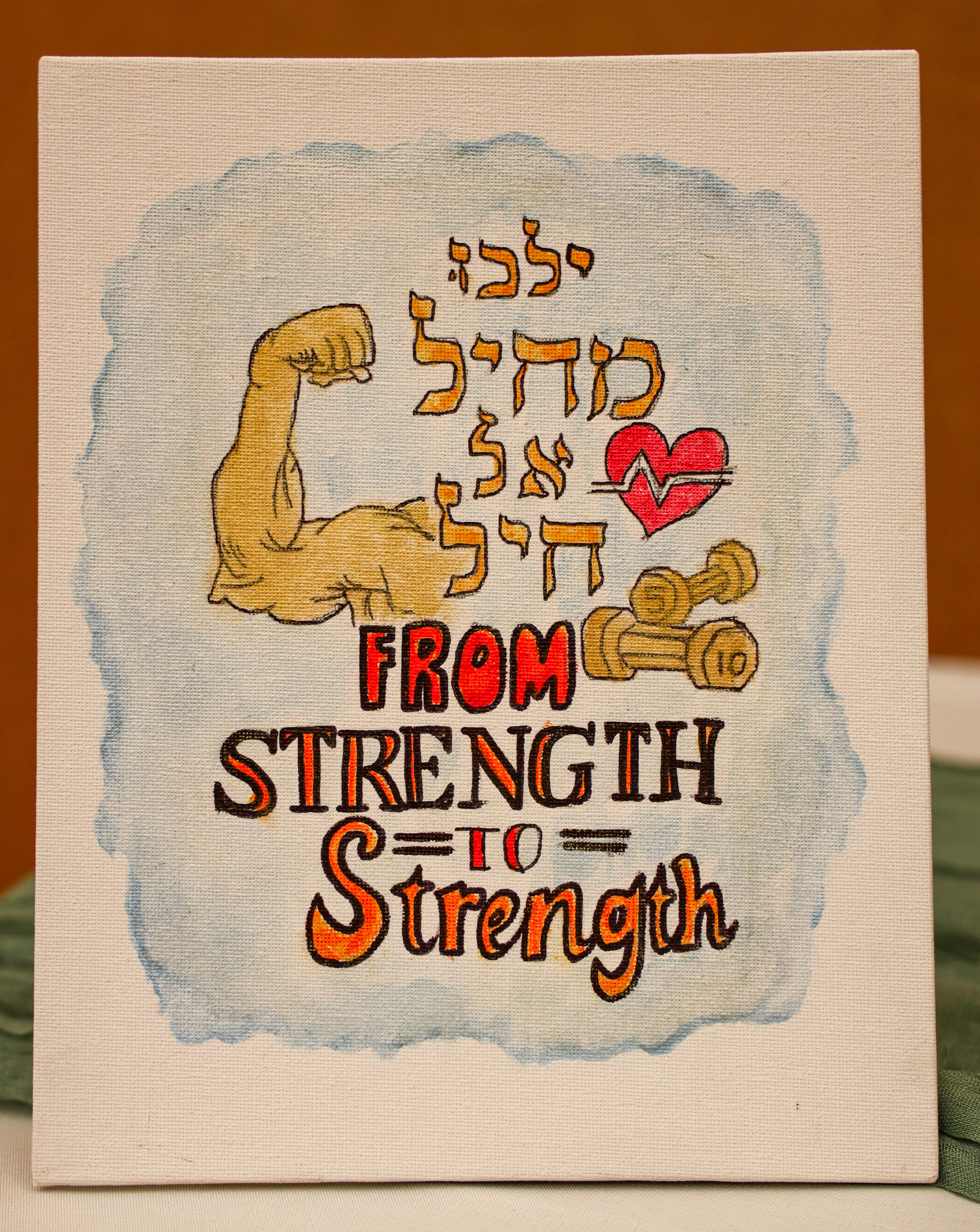 11) Another famous quote “Yalchu May’Chayil el Chayil” comes from Tehillim/Psalms, and the Rebbe also uses it a lot. It also became one of the songs for the Rebbe’s birthday one year (when that was his chapter of Tehillim). People also use it in wishes to one another. It means: “Go from strength to strength!” One strength should lead to the next! Thank you to my classmates who have been with me every step of the way, one level to the next, my classmates have been there with me from our very beginning of school at Maimonides Nursery until now!
11) Another famous quote “Yalchu May’Chayil el Chayil” comes from Tehillim/Psalms, and the Rebbe also uses it a lot. It also became one of the songs for the Rebbe’s birthday one year (when that was his chapter of Tehillim). People also use it in wishes to one another. It means: “Go from strength to strength!” One strength should lead to the next! Thank you to my classmates who have been with me every step of the way, one level to the next, my classmates have been there with me from our very beginning of school at Maimonides Nursery until now!
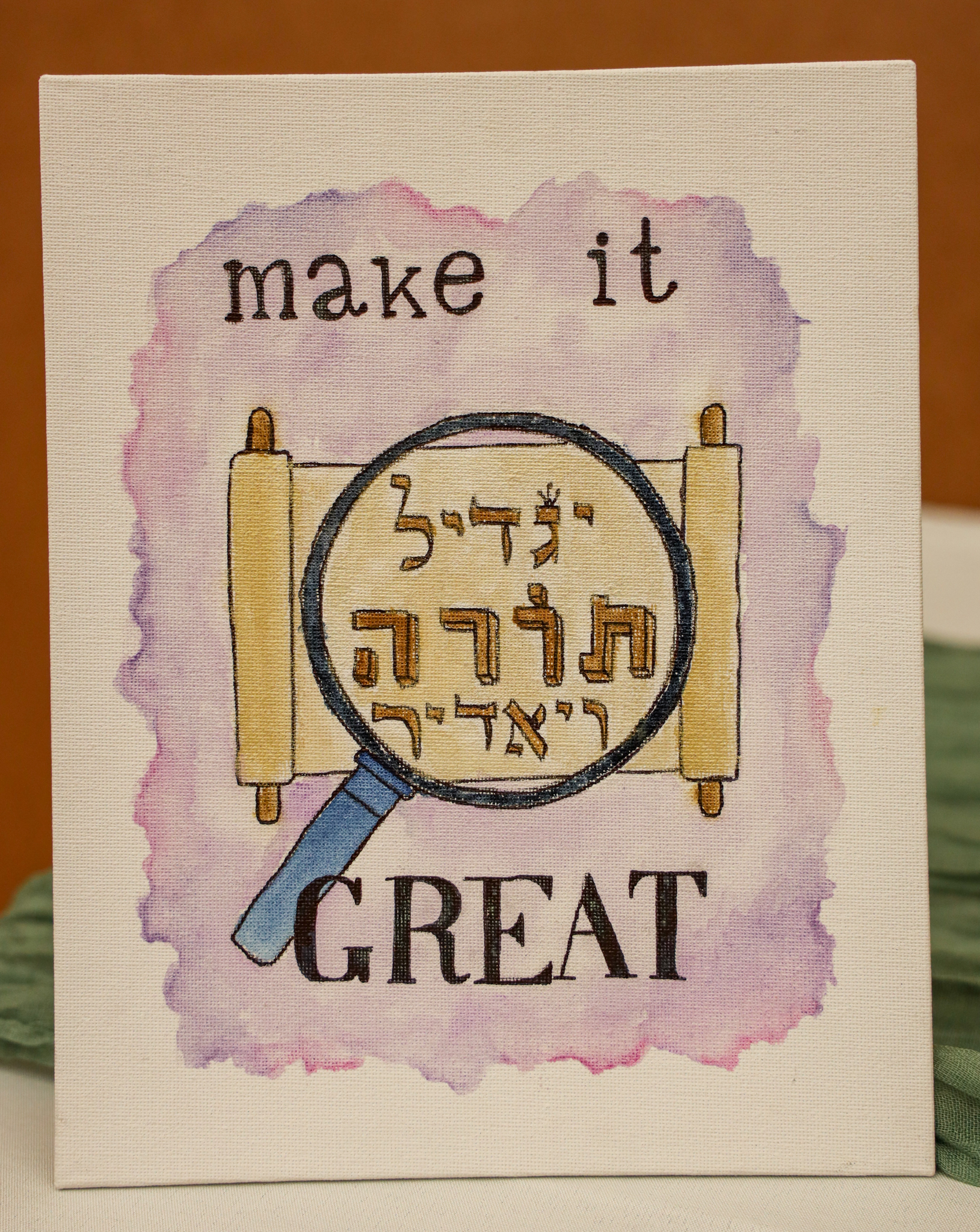 12) The last of the 12 sayings that I studied and illustrated is called “Yagdil Torah v’Yaadir” which means that we expand and enhance Torah to make it even greater. Hashem wants us to do that, and leaves room for us to do it. Thank you to my siblings for expanding and enhancing everything we do together as a team and as a family.
12) The last of the 12 sayings that I studied and illustrated is called “Yagdil Torah v’Yaadir” which means that we expand and enhance Torah to make it even greater. Hashem wants us to do that, and leaves room for us to do it. Thank you to my siblings for expanding and enhancing everything we do together as a team and as a family.
I want to thank my sister Chani for working on the artwork with me. My sister Sara guided me with the fonts and lettering. It’s neat how each font has its own personality. My brother Moshe helped, too. That’s for this Bucket-List project, but in general want to thank all of my siblings and family for being a great team and doing so much together.
Bucket-Lists are not one-size-fits-all. Everyone’s comfort zone is different. We all have our own ways to rise above and go beyond. That’s why we left drawings uncolored for this notebook, everyone adds their own coloring. There are empty pages alongside each illustrated teaching for you to fill in and take note!
I’ll keep filling and adding to my own bucket-lists, that’s for sure!
